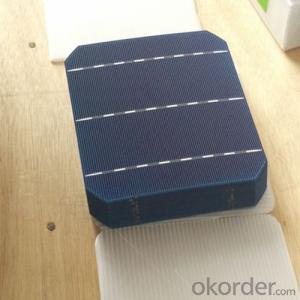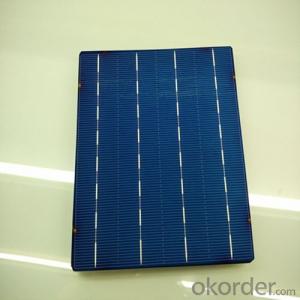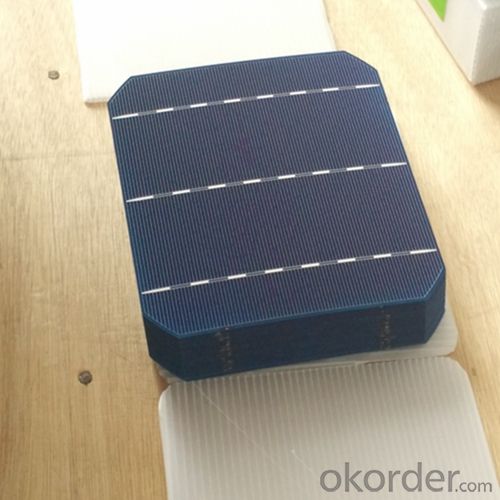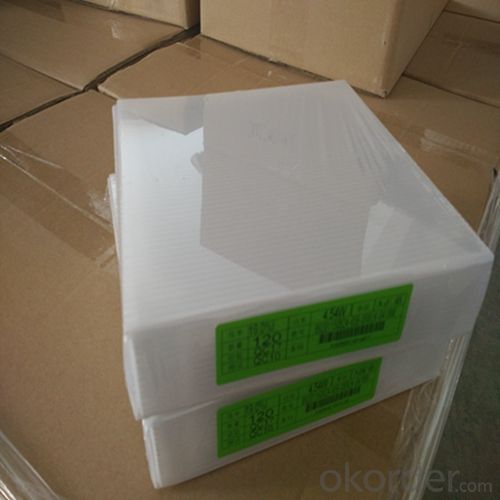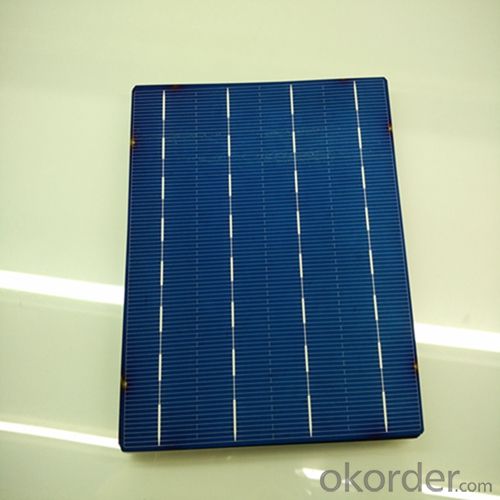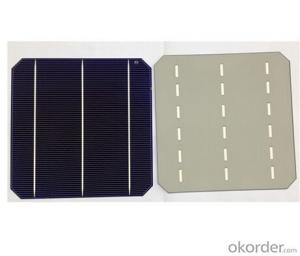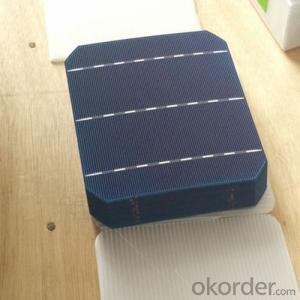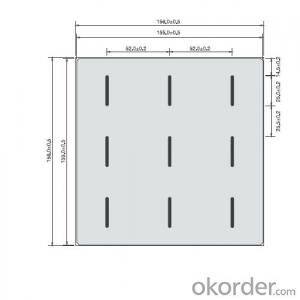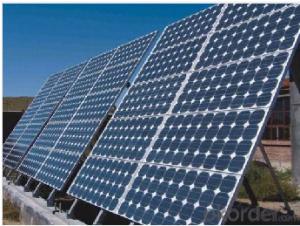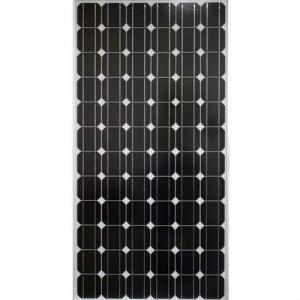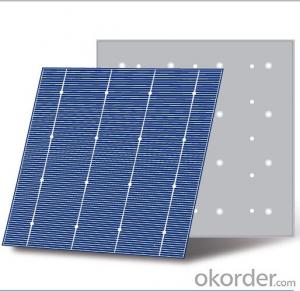Tj Solar Cells - Mono 156x156mm2 Solar Cells Made in China
- Loading Port:
- Shanghai
- Payment Terms:
- TT OR LC
- Min Order Qty:
- 4900 watt
- Supply Capability:
- 6000000 watt/month
OKorder Service Pledge
OKorder Financial Service
You Might Also Like
The operation of a photovoltaic (PV) cell requires 3 basic attributes:
The absorption of light, generating either electron-hole pairs or excitons.
The separation of charge carriers of opposite types.
The separate extraction of those carriers to an external circuit.
In contrast, a solar thermal collector supplies heat by absorbing sunlight, for the purpose of either direct heating or indirect electrical power generation from heat. A "photoelectrolytic cell" (photoelectrochemical cell), on the other hand, refers either to a type of photovoltaic cell (like that developed by Edmond Becquerel and modern dye-sensitized solar cells), or to a device that splits water directly into hydrogen and oxygen using only solar illumination.Characteristic of Mono 156X156MM2 Solar Cells
You are gaining energy independence - add battery backup power for even greater energy security
The cost of electricity is only going to rise – insure against that rising cost
Adaptive cells change their absorption/reflection characteristics depending to respond to environmental conditions. An adaptive material responds to the intensity and angle of incident light. At the part of the cell where the light is most intense, the cell surface changes from reflective to adaptive, allowing the light to penetrate the cell. The other parts of the cell remain reflective increasing the retention of the absorbed light within the cell.[67]
In 2014 a system that combined an adaptive surface with a glass substrate that redirect the absorbed to a light absorber on the edges of the sheet. The system also included an array of fixed lenses/mirrors to concentrate light onto the adaptive surface. As the day continues, the concentrated light moves along the surface of the cell. That surface switches from reflective to adaptive when the light is most concentrated and back to reflective after the light moves along
Mechanical data and design
Format | 156mm x 156mm±0.5mm |
Thickness | 210μm±40μm |
Front(-) | 1.5mm bus bar (silver),blue anti-reflection coating (silicon nitride) |
Back (+) | 2.5mm wide soldering pads (sliver) back surface field (aluminium) |
Temperature Coefficient of Cells
Voc. Temp.coef.%/K | -0.35% |
Isc. Temp.coef .%/K | +0.024%/K |
Pm.Temp.coef. %/K | -0.47%/K |
Electrical Characteristic
Effiency(%) | Pmpp(W) | Umpp(V) | Impp(A) | Uoc(V) | Isc(A) | FF(%) |
18.35 | 4.384 | 0.526 | 8.333 | 0.63 | 8.877 | 78.39% |
18.20 | 4.349 | 0.526 | 8.263 | 0.63 | 8.789 | 78.54% |
18.05 | 4.313 | 0.525 | 8.216 | 0.63 | 8.741 | 78.32% |
17.90 | 4.277 | 0.524 | 8.161 | 0.625 | 8.713 | 78.04% |
17.75 | 4.241 | 0.523 | 8.116 | 0.625 | 8.678 | 77.70% |
17.60 | 4.206 | 0.521 | 8.073 | 0.625 | 8.657 | 77.36% |
17.45 | 4.170 | 0.519 | 8.039 | 0.625 | 8.633 | 76.92% |
17.30 | 4.134 | 0.517 | 8.004 | 0.625 | 8.622 | 76.59% |
17.15 | 4.096 | 0.516 | 7.938 | 0.625 | 8.537 | 76.80% |
17.00 | 4.062 | 0.512 | 7.933 | 0.625 | 8.531 | 76.18% |
16.75 | 4.002 | 0.511 | 7.828 | 0.625 | 8.499 | 75.34% |
16.50 | 3.940 | 0.510 | 7.731 | 0.625 | 8.484 | 74.36% |
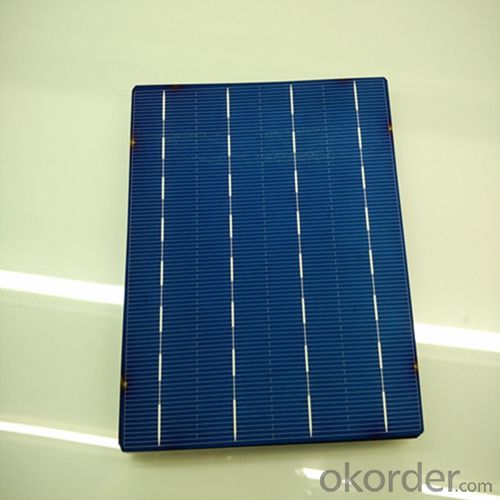
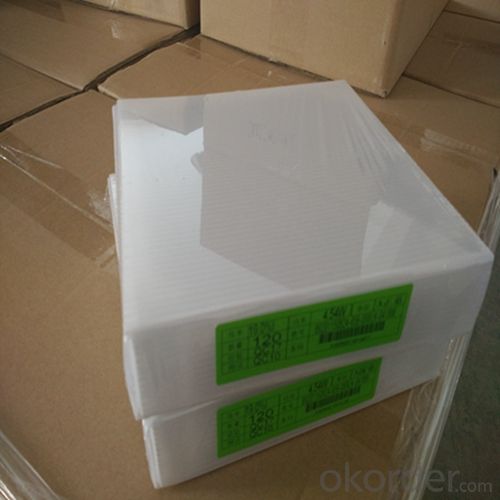
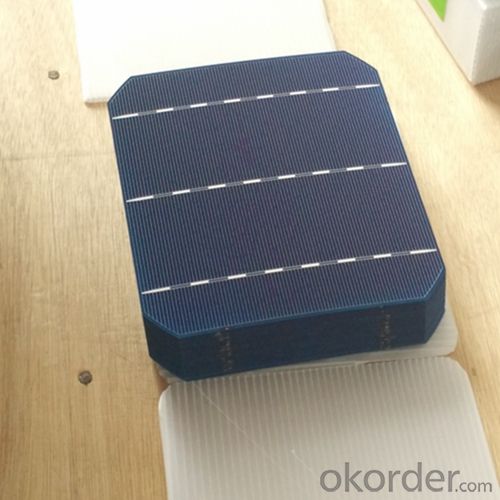

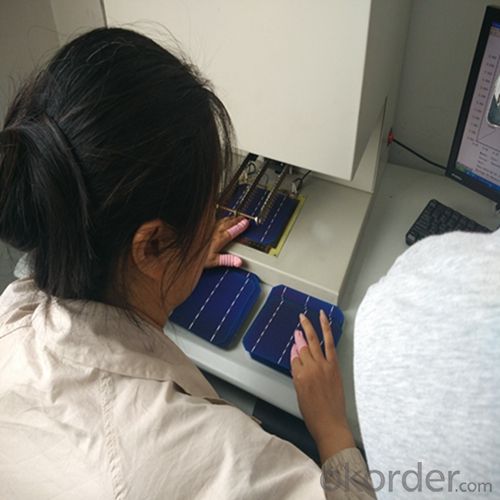 FAQ
FAQ
Q: What price for each watt?
A: It depends on the quantity, delivery date and payment terms, generally Large Quantity and Low Price
Q: What is your size for each module? Can you tell me the Parameter of your module?
A: We have different series of panels in different output, both c-Si and a-Si. Please take the specification sheet for your reference.
Q: What is your size for each module? Can you tell me the Parameter of your module?
A: We have different series of panels in different output, both c-Si and a-Si. Please take the specification sheet for your reference.
- Q: How do solar cells perform in areas with frequent earthquakes?
- Solar cells can perform well in areas with frequent earthquakes, as they are designed to withstand a certain level of structural stress. However, the installation and mounting of solar panels should be done with proper engineering considerations to ensure their stability during seismic events. Additionally, regular inspections and maintenance may be required to address any potential damages caused by earthquakes.
- Q: Can solar cells be used on airplanes?
- Yes, solar cells can be used on airplanes. In recent years, there has been a rise in the use of solar cells to power various aircraft systems, such as auxiliary power units and cabin lighting. Additionally, there have been successful attempts to develop solar-powered unmanned aerial vehicles (UAVs) that can fly for extended periods using solar energy. However, due to the limited surface area available on airplanes and the current efficiency of solar cells, it is not yet feasible to solely rely on solar power for the propulsion of large commercial aircraft.
- Q: Can solar cells be used in schools or educational institutions?
- Yes, solar cells can definitely be used in schools or educational institutions. They provide a practical and hands-on way to teach students about renewable energy sources, sustainability, and environmental stewardship. Installing solar cells in schools can also help reduce electricity costs and promote energy efficiency, making it a beneficial investment for educational institutions.
- Q: Can solar cells be used in space satellites?
- Yes, solar cells can be used in space satellites. In fact, they are the most common source of power for satellites in space. Solar cells convert sunlight directly into electricity, making them an ideal and efficient source of renewable energy in the space environment.
- Q: On the parallel connection of solar cells
- As for the solar cells in the string, parallel combination is Causing the damage of the battery pack, I think it is first necessary to make sure that the "combined" solar cells should have the same characteristics, and that the various parameters between them should be the same or similar, at least several major parameters must be the same, to achieve these Conditions can be combined after the combination; if the series combination in the use of a group of solar cells damaged and broken, then the other groups will not power the power supply equipment, because the entire line has been in the open state,
- Q: Can anybody tell me the power supply of the home solar cell?
- l can give you an example as following: 40W * 4H=160Wh=0.16 degree power In accordance with the summer sunny weather one day 5 standard sun, consider 70% system efficiency 160 / 5 / 70%=45.7W, so 50 Watt Solar cell is enough.
- Q: Anybody ever heard of solar roll flexible solar panel?
- The flexible solar cell rolls is more convenient than the other solar cells because it can be stored in a convenient storage tube.
- Q: Can solar cells be used in agriculture?
- Yes, solar cells can be used in agriculture. They can be used to power various equipment and systems in farming, such as irrigation systems, ventilation systems, and lighting for greenhouses. Solar energy can also be utilized to charge batteries for electric farm vehicles and tools, reducing reliance on fossil fuels and minimizing carbon emissions. Additionally, solar panels can be mounted on rooftops or installed as shade structures to provide shelter for livestock while generating clean energy.
- Q: Can solar cells be used for powering hotels?
- Yes, solar cells can be used for powering hotels. Solar cells, also known as photovoltaic cells, convert sunlight into electricity, providing a sustainable and renewable energy source. By installing solar panels on the roofs or in open spaces around hotels, they can generate clean energy to meet a portion or even the entire electricity demand of the establishment, reducing reliance on traditional power sources and resulting in cost savings.
- Q: What are the safety considerations for installing solar cells?
- Some safety considerations for installing solar cells include proper handling of the panels to avoid damage or injury, ensuring that electrical connections are correctly installed to prevent electrical hazards, and complying with local building codes and regulations. Additionally, it is essential to work with a qualified installer or electrician who is trained in solar installations to minimize any potential risks.
Send your message to us
Tj Solar Cells - Mono 156x156mm2 Solar Cells Made in China
- Loading Port:
- Shanghai
- Payment Terms:
- TT OR LC
- Min Order Qty:
- 4900 watt
- Supply Capability:
- 6000000 watt/month
OKorder Service Pledge
OKorder Financial Service
Similar products
Hot products
Hot Searches
Related keywords

